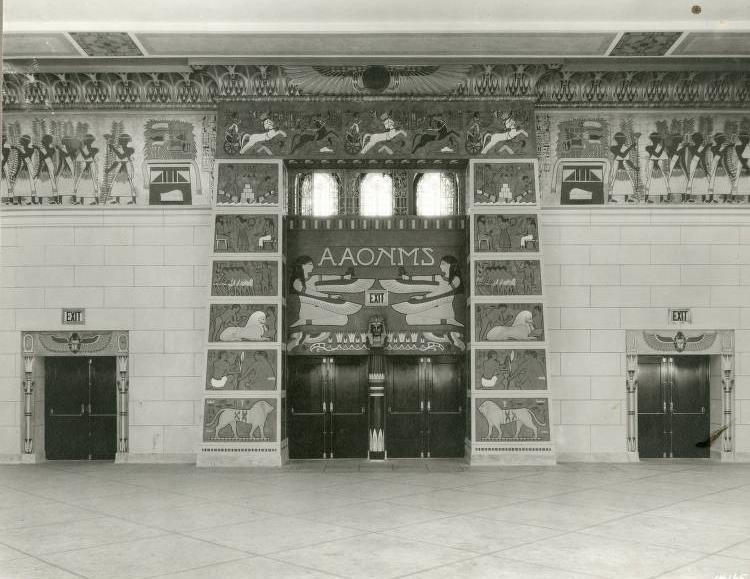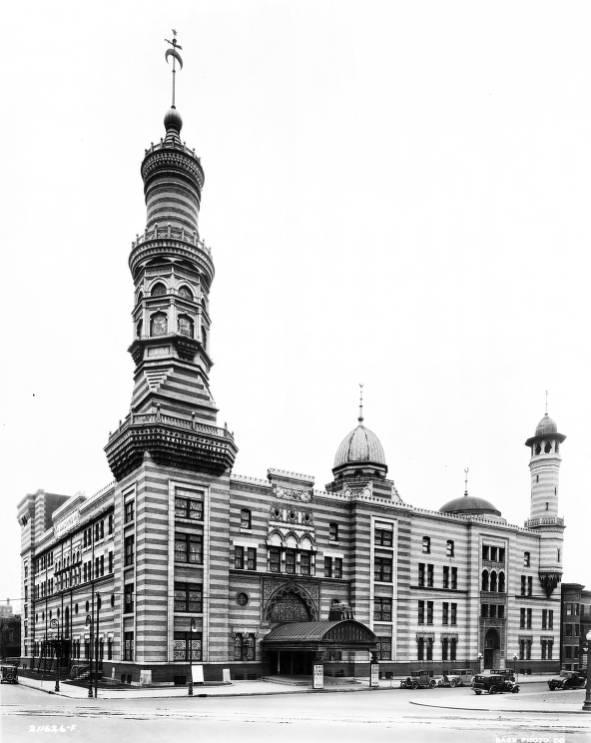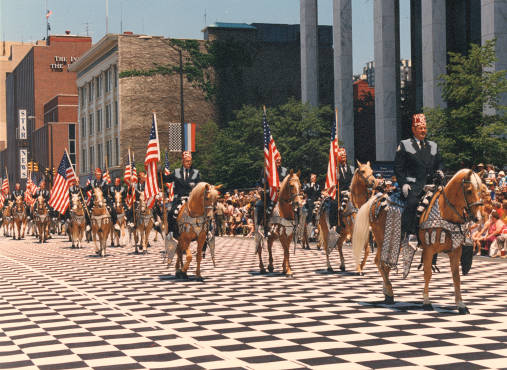Located at 510 North New Jersey Street, Old National Centre, now a major event venue, was formerly known as the Murat Temple as well as local headquarters for the Ancient Arabic Order, Nobles of the Mystic Shrine (more popularly known as the “Shriners,” a Masonic organization). Its design is based on Middle Eastern and Egyptian themes.

The Murat was the only Shrine temple to bear a French name. It was named for “Bir Murat,” an oasis in the Nubian Desert, which was in turn named for Joachim Murat, a general in Napoleon’s Egyptian campaign. At the time of its centenary in 1984, Murat was the second-largest Shrine temple in the world in membership.
The Indianapolis Temple was chartered on June 4, 1884. Its first ceremonial class (1885) included Indianapolis attorney, soldier, and author of popular novel Ben Hur and Indianapolis Democratic boss and mayor .

Designed by Oscar D. Bohlen (son of who was a Murat Shriner) and built by in 1909, the four-story temple is distinguished by its yellow and brown brick banding, terra cotta trim, minarets, and stained-glass windows. The tower at the southeast corner is 208-feet high.
The firm of designed an addition to the building in 1922 to blend with the original structure. It features a minaret intended to balance the tower on the original structure, as well as the Egyptian Room, an auditorium with motifs taken from tombs in Upper Egypt. (Though the theme of the room coincided with the discovery of the tomb of Tutankhamen by Howard Carter and Lord Carnarvon in 1922, it had been designed earlier). An attempt was made to integrate an architecturally unsympathetic 1968 clubhouse addition by decorating it with a mosaic of Arab individuals crossing a desert.

Many residents of Indianapolis know the Murat best for its theater (1910), the oldest surviving downtown stage house. The Shuberts leased the theater from 1910 to 1930 and brought in a variety of events and shows, ranging from a 1932 speech by Winston Churchill to Broadway musicals. After the closed in 1948 and until opened in 1963, the Murat Theater was the only venue available for roadshows.
The Temple has been active in Indianapolis in other ways: It is responsible for establishing the Parade; it gave the first animal— appropriately, a camel—to the ; and it allowed the (ISO) to use the theater for a nominal charge during the Great Depression, a gesture that helped ISO survive. In the 1980s, the Murat Theater served, briefly in the 1980s, as a home for the Indianapolis Opera Company.

A 1988 fire threatened the 1968 addition to the building. Though the damage was comparatively slight, 15 firefighters were injured when part of the building collapsed. This part of the building continues as the local headquarters for the Shriners.
In the early 1990s, maintenance of the Murat Temple became untenable for the organization, and it leased the building to . Renamed Old National Centre in 2014, after lessee Live Nation struck a deal with Old National Bank to rename the building in 2010. After the Murat Temple Association and Live Nation spent several rounds in court over naming rights, a Marion County judge and Indiana Court of Appeals dismissed a lawsuit claiming a name change did not violate the terms of the lease. Live Nation acquired local special events and entertainment promotion company Sunshine Promotions in 2016 and uses the building as an entertainment venue; however, the Murat Shriners continue to own the structure.
Old National is one of three significant Masonic historic landmarks in Indianapolis, including and Indiana Freemasons Hall.

Help improve this entry
Contribute information, offer corrections, suggest images.
You can also recommend new entries related to this topic.